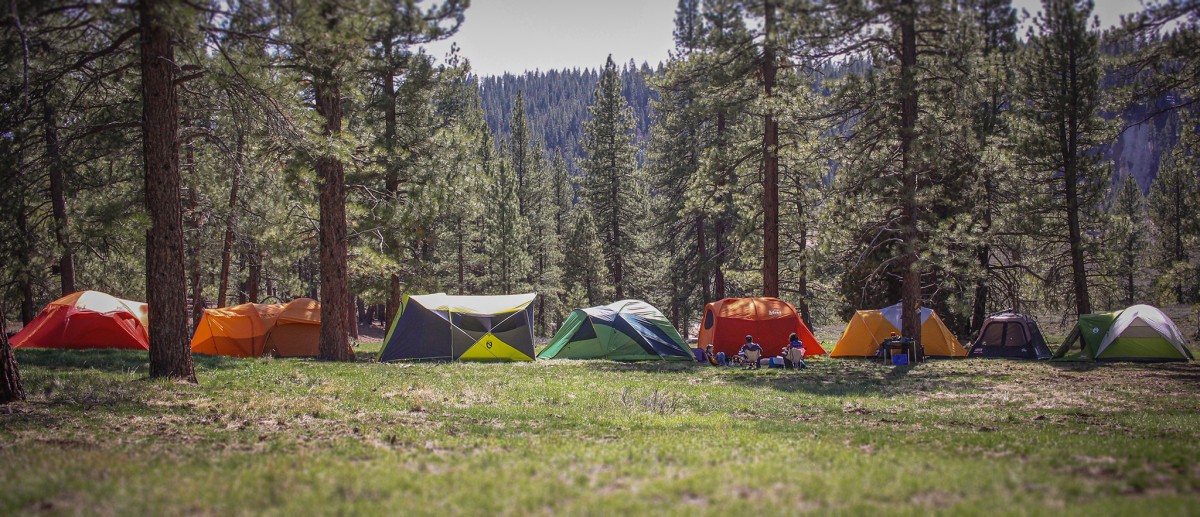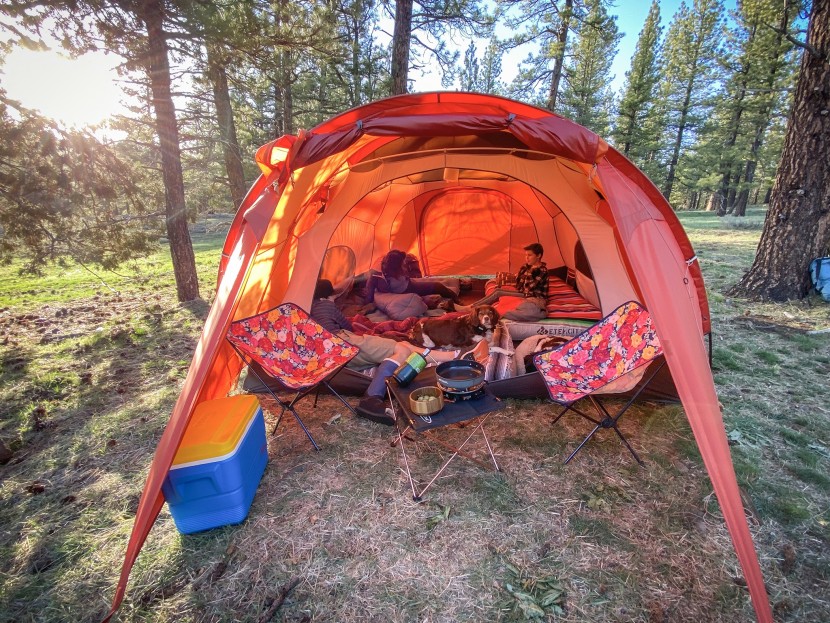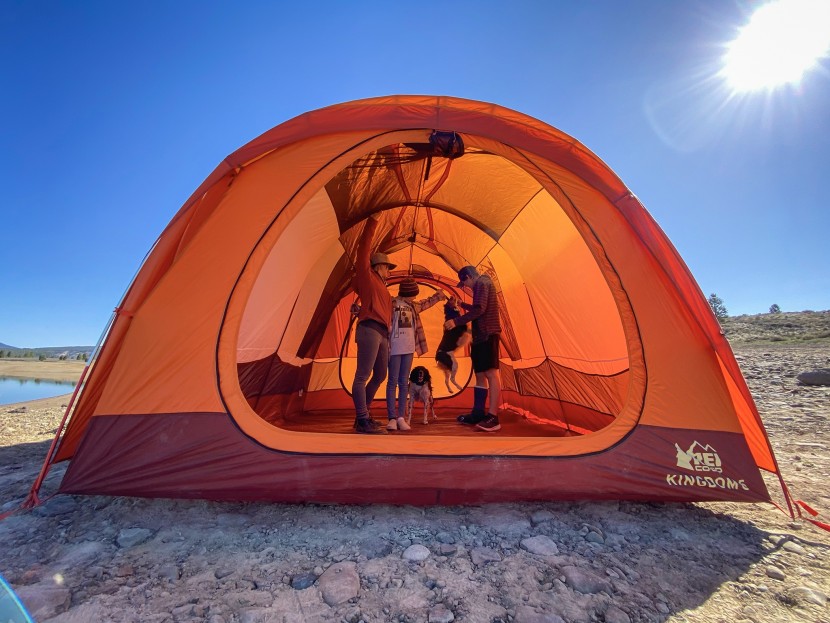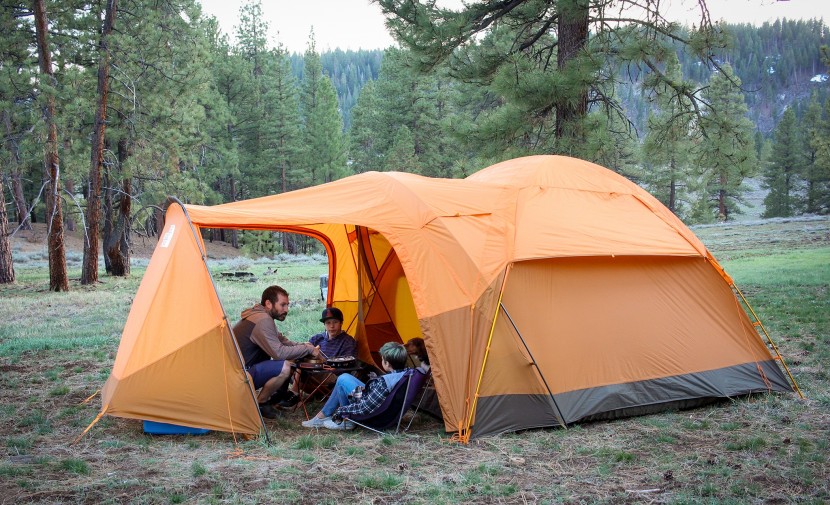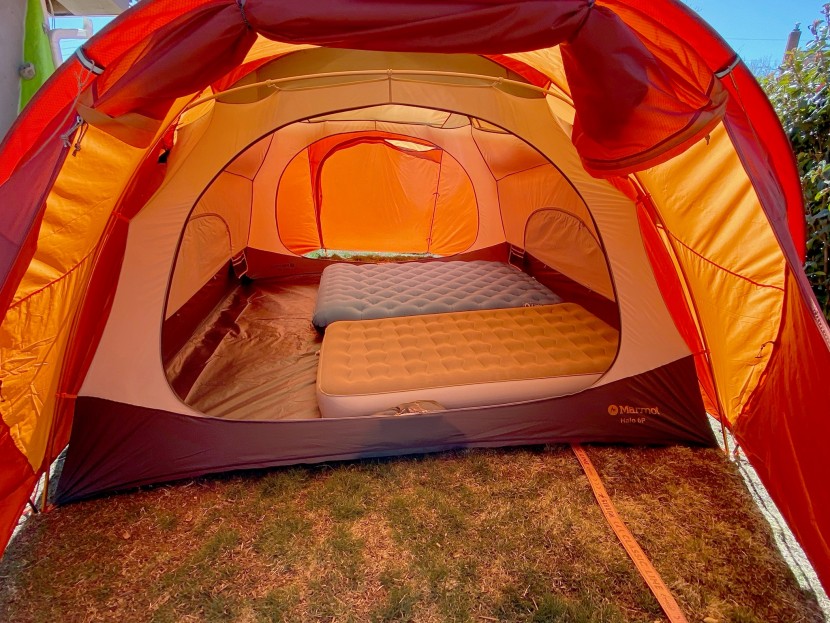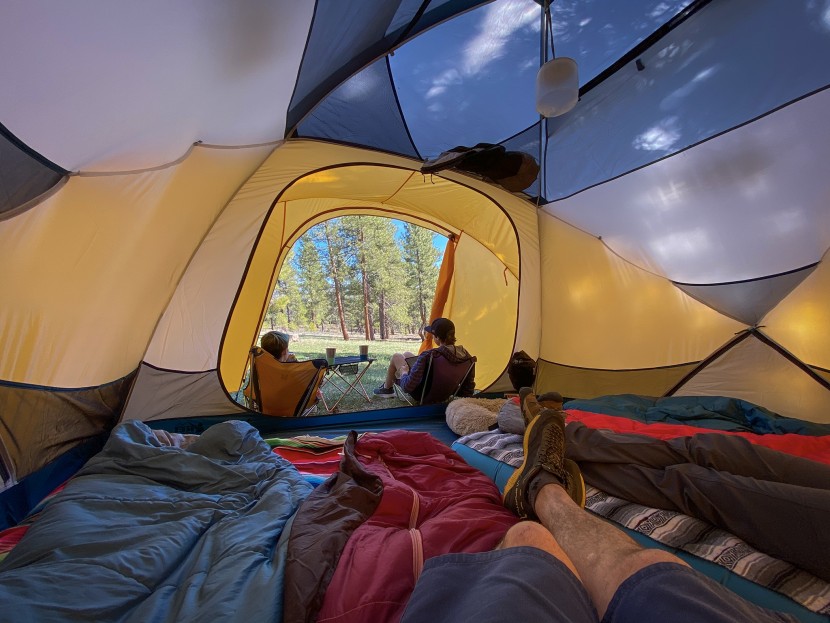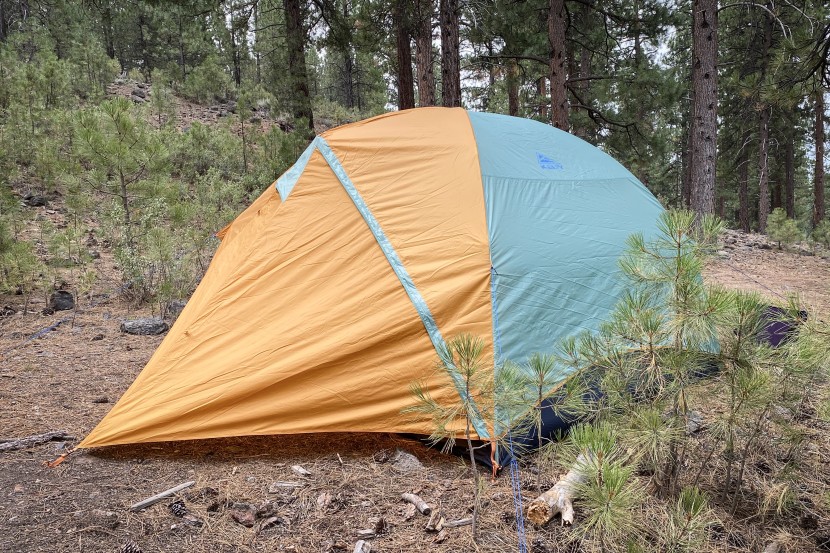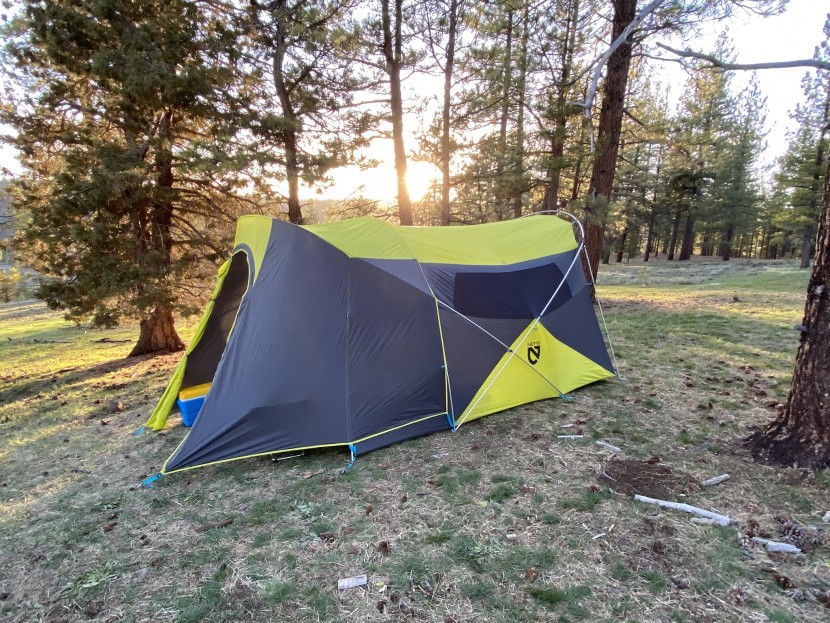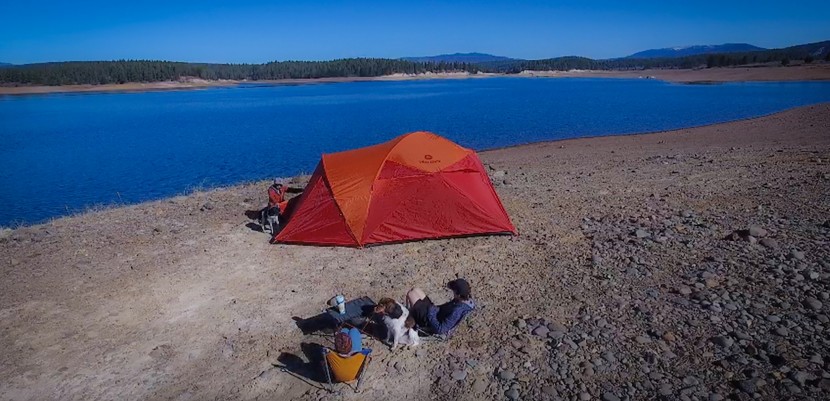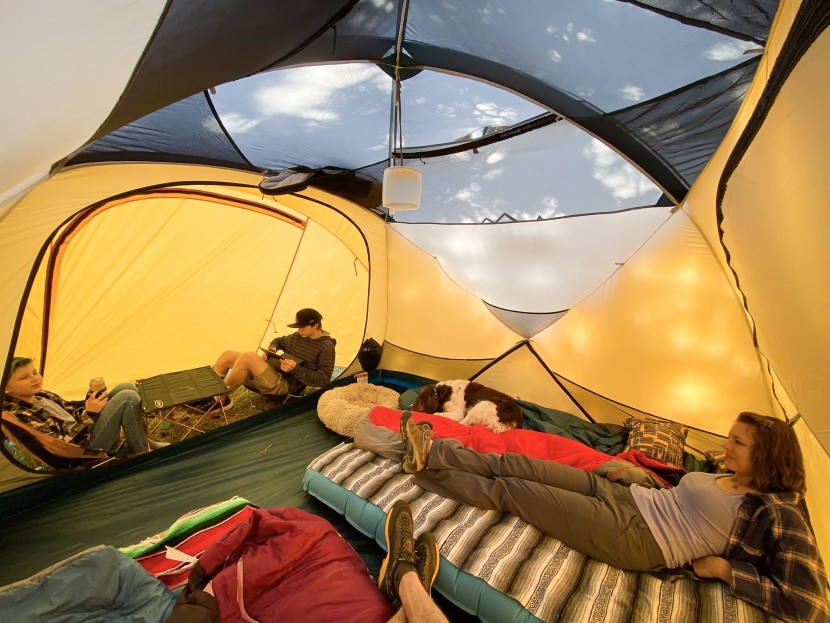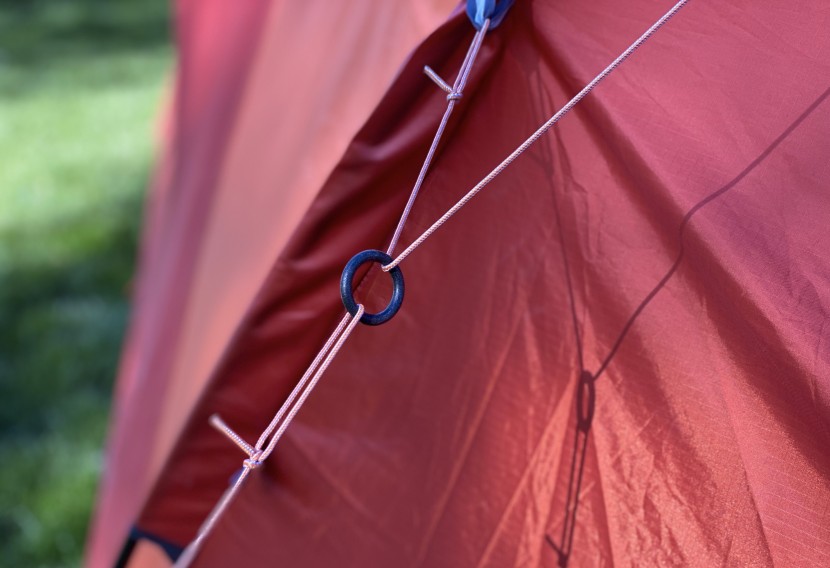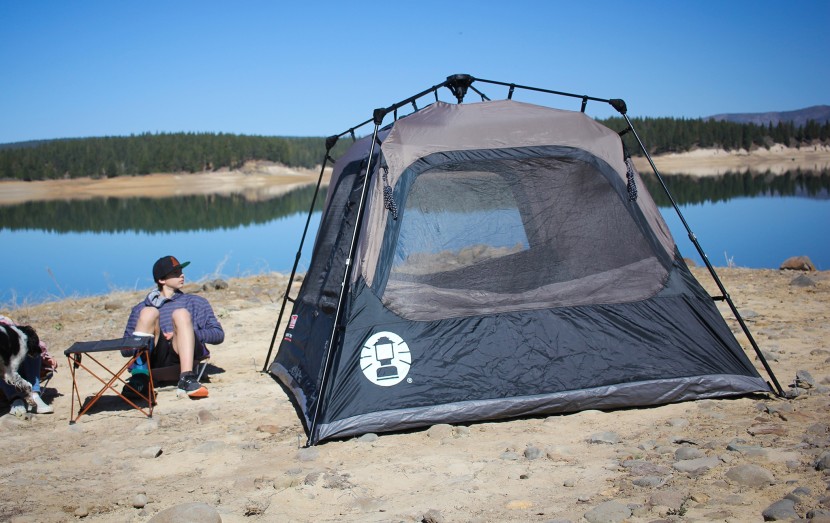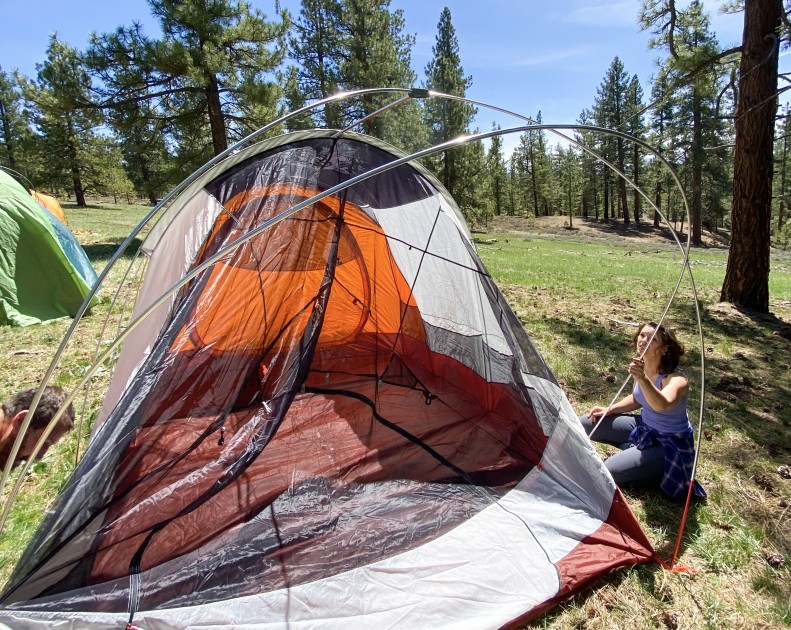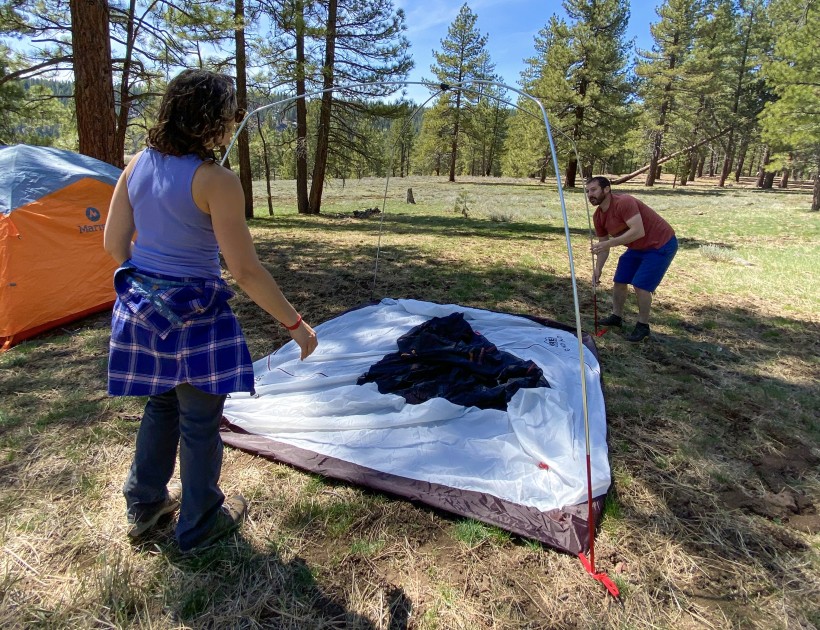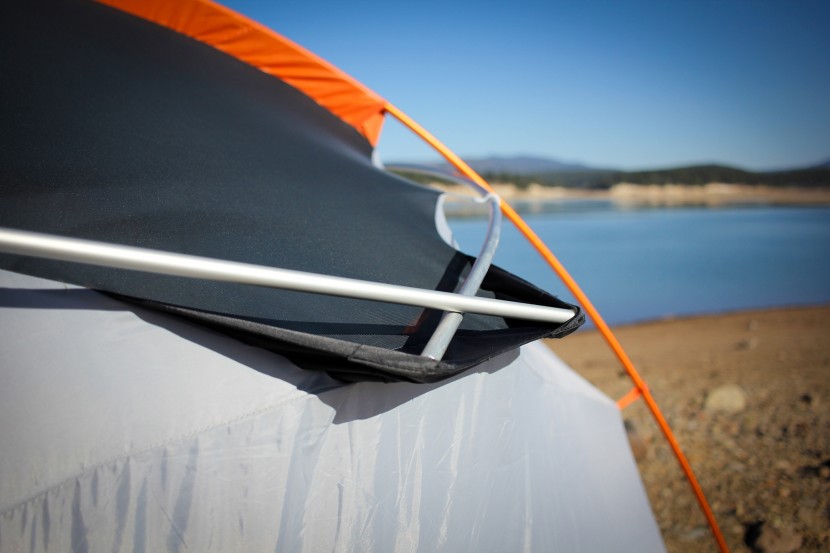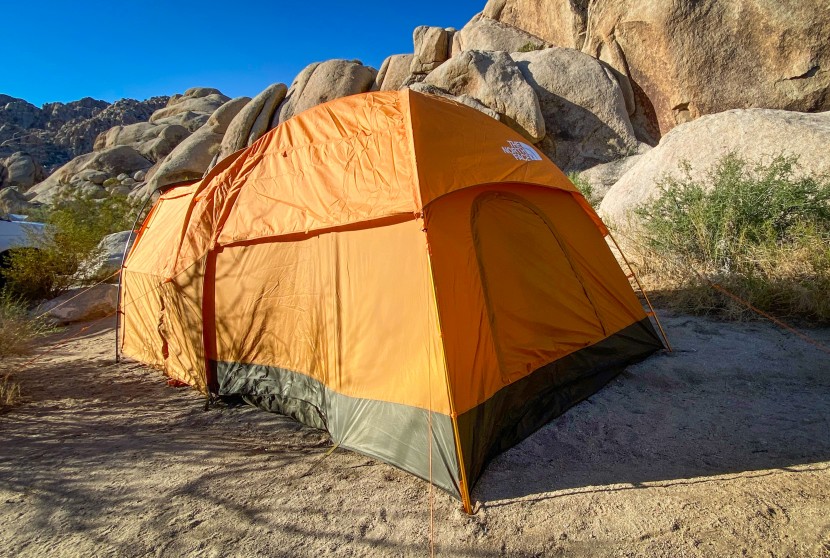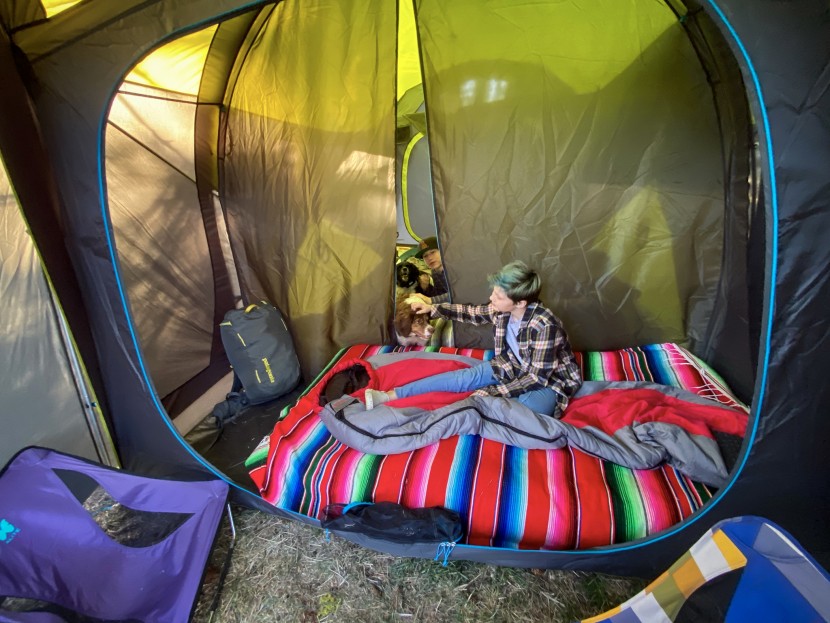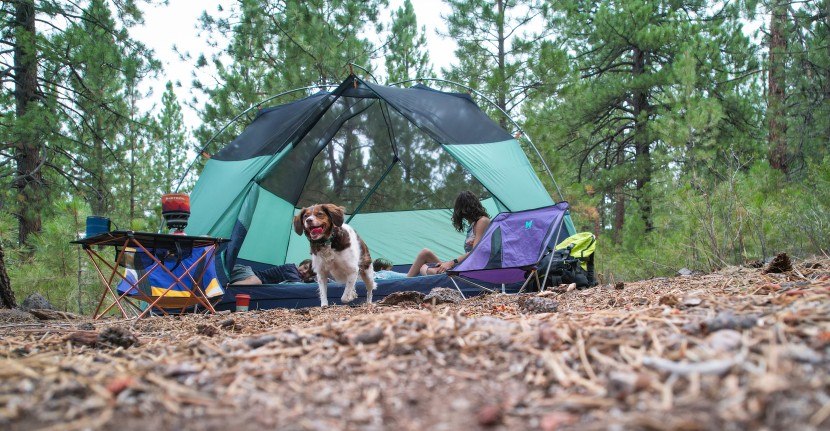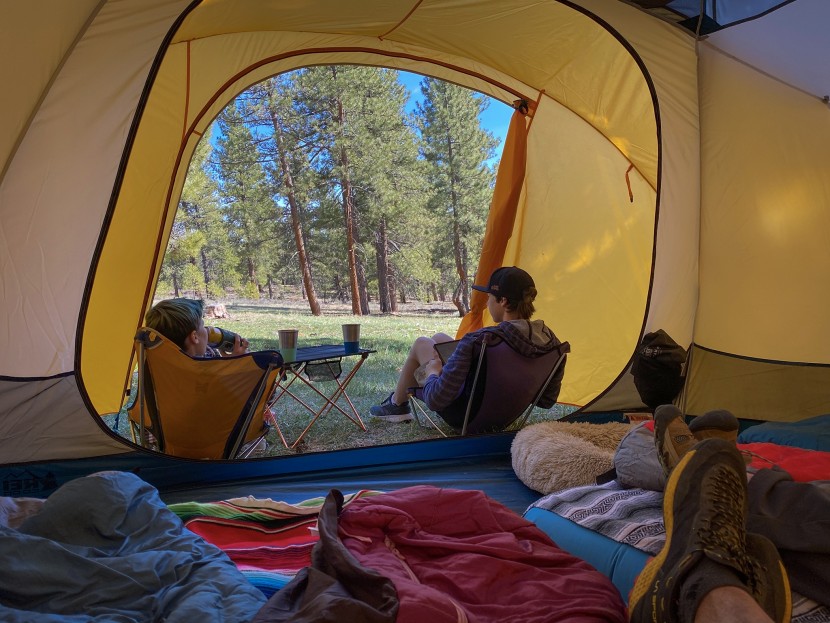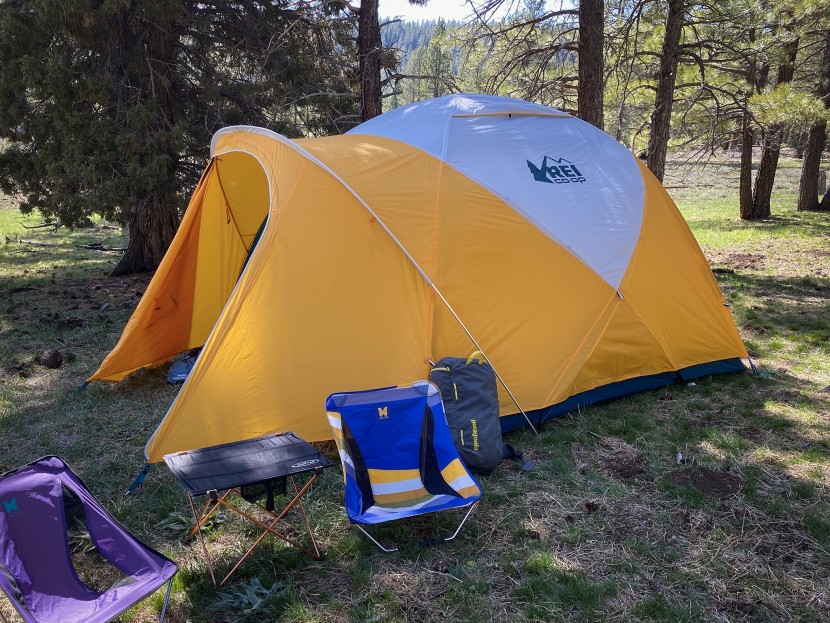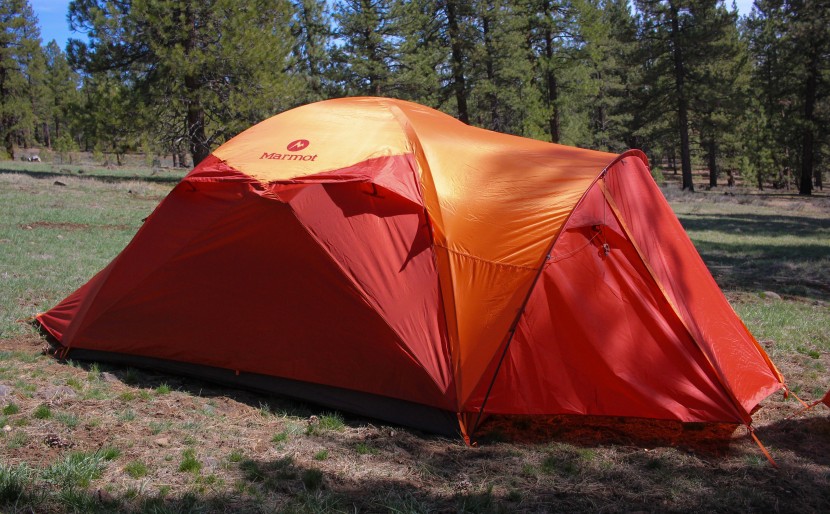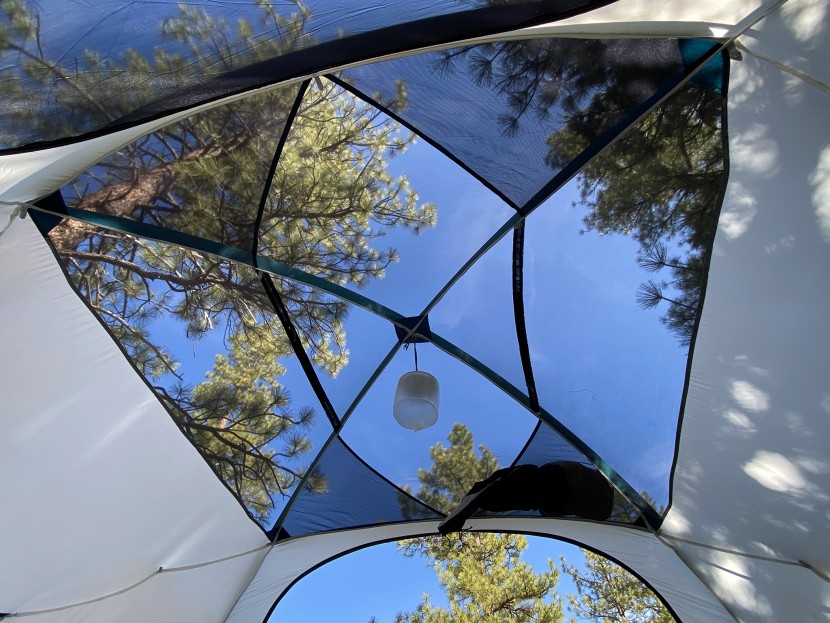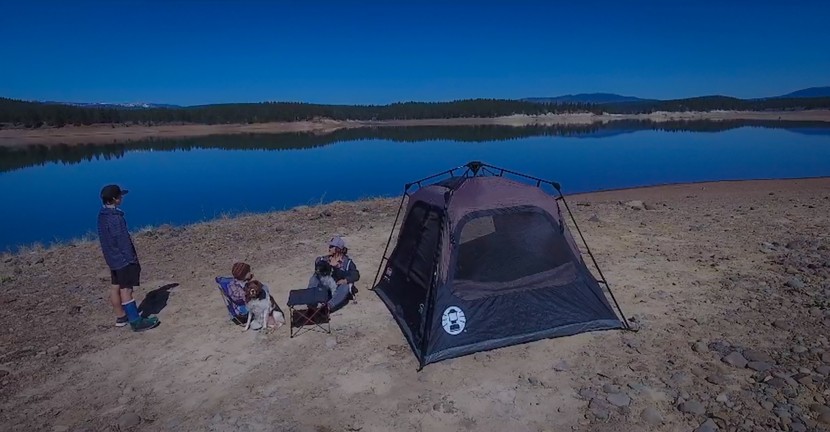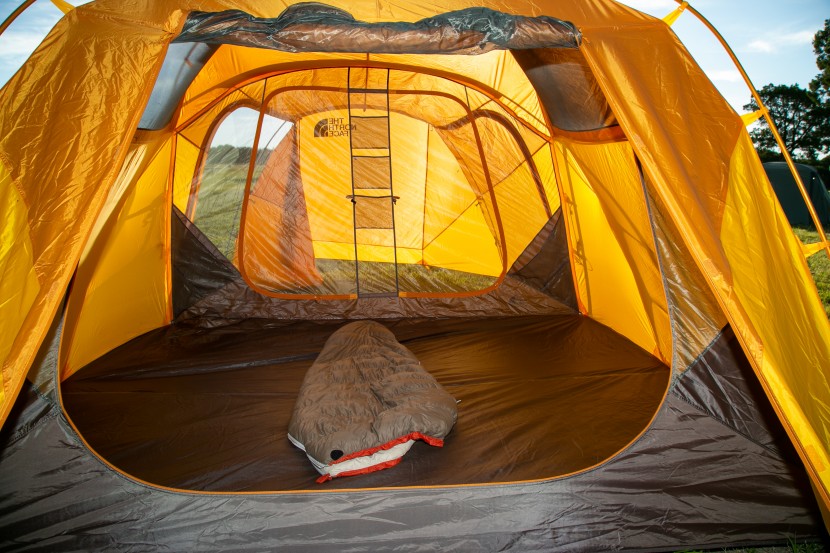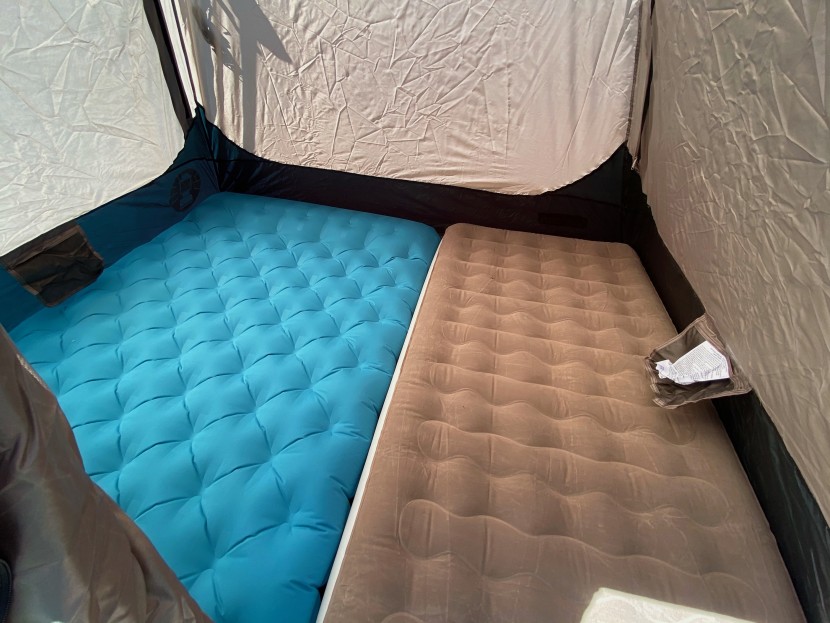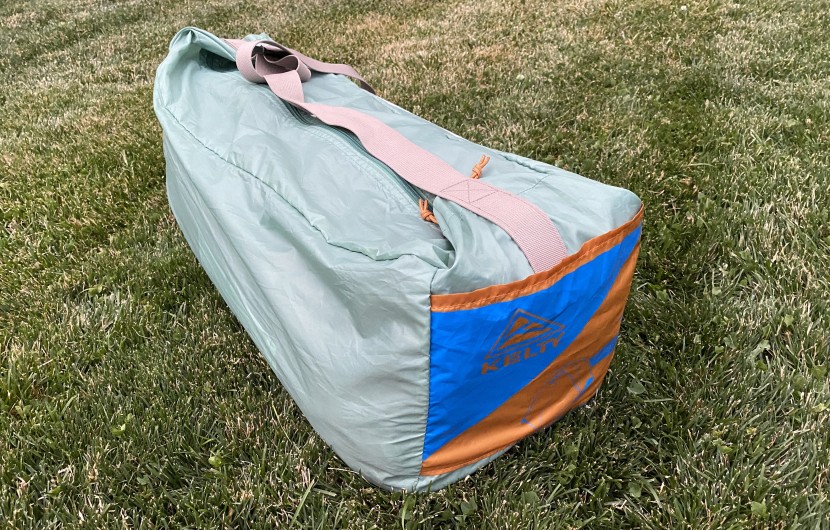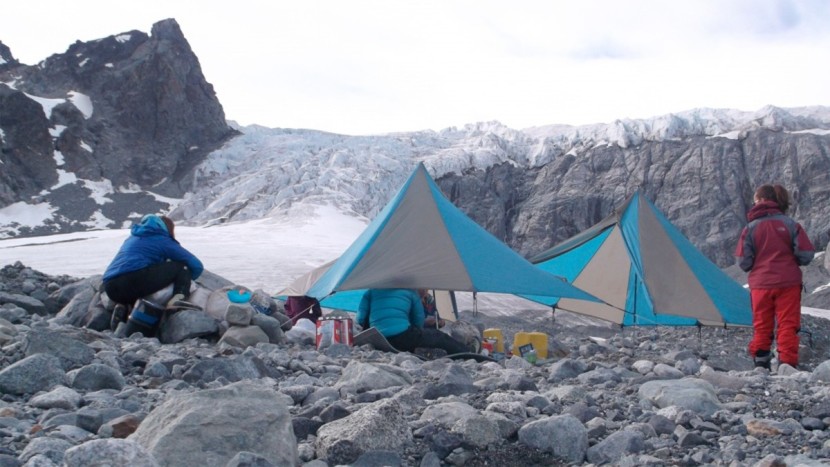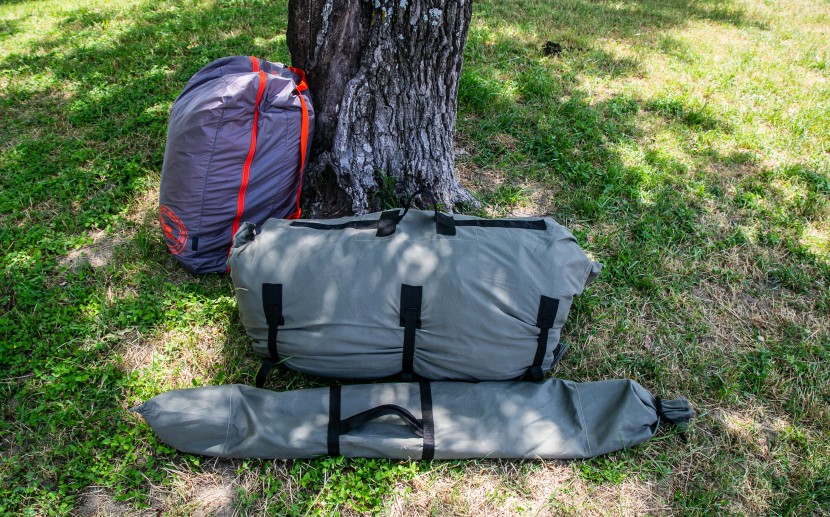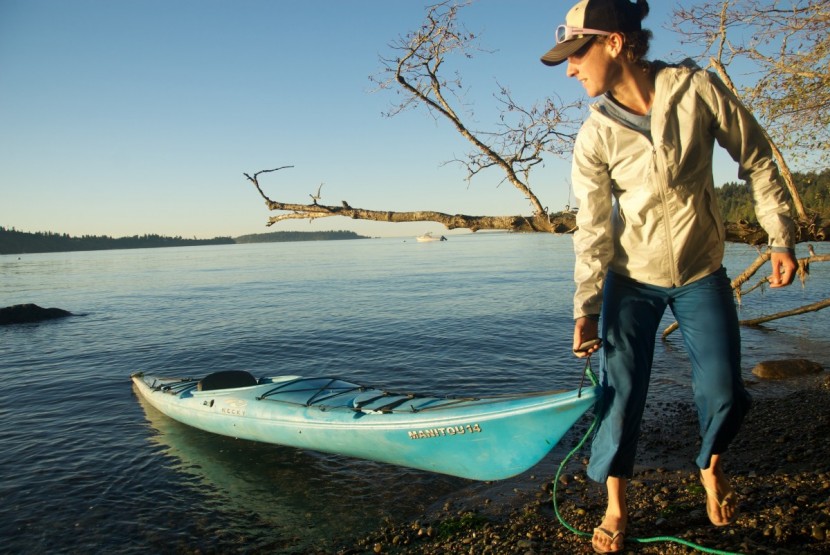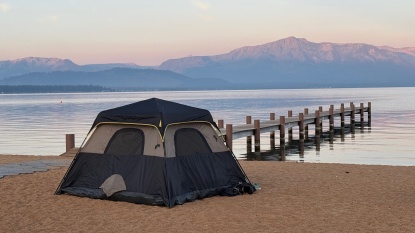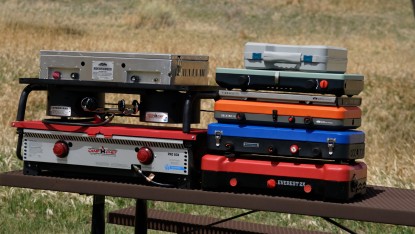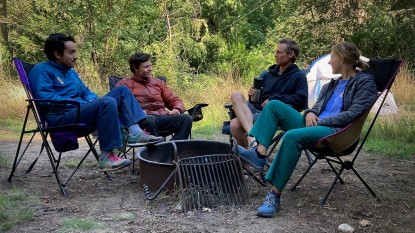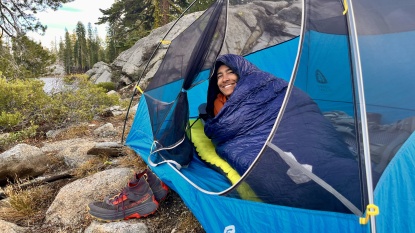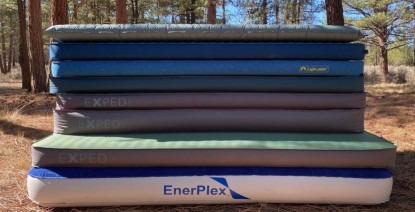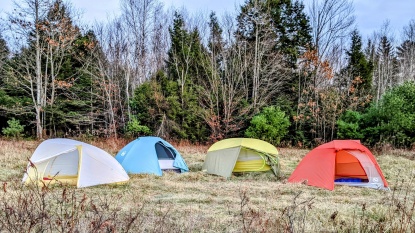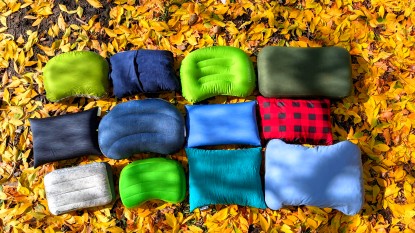Buying a tent is a big deal. There are hundreds of camping tent options, they get expensive fast, and you don't want to be stuck with the wrong gear on a camping trip. The good news, we are here to help make this process as easy as possible. We will walk you through the major features of our favorite camping tents, what their purpose is, and help you understand if they should matter or not. Our goal here isn't to pick your tent for you (sorry, you still have to make that choice on your own) but to give you all the information you need to make your choice easier. In less than 15 minutes, you will be spouting off words like vestibule and guyline, you will understand the difference between a hub pole and a straight pole setup, a single wall and a double wall, and you will know that six people don't fit in a 6-person tent.
Considerations
Now we are big fans of narrowing things down, so let's start with the first and most important decision you will make in your camping tent selection — what kind of camping do you want to do?
There are four basic styles that tents are categorized in: backpacking (think lighter and smaller), camping (think bigger and heavier), 4-season (think warmer and stronger), and specialty (think rooftops, portaledges, budget tents, ultralights, etc.). The vast majority of tents purchased are for camping. If you intend to take your tent from the back of your vehicle to a campsite that is less than a football field away, you'll want a camping tent, and you are in the right spot. We have a few tents in our camping tent lineup that might also be capable (though not practical) of using as a backpacking tent or a shoulder season tent — even for dipping your toes into some mild winter camping. So, if you are on the fence or thinking that you might want to try something outside of just summer camping, you still may be in the right place.
From here, we like to consider five key metrics that we think are the most important in determining the overall performance of a camping tent: Space and Comfort, Weather Resistance, Ease of Use, Durability, and Family Friendliness. As you browse the tents we have reviewed, you will notice that each one contains a section on how well they performed in each metric.
Space and Comfort
For most, this is the metric that matters, and rightfully so. When you are camping less than 30 feet from your car, weight and packed size isn't an issue, so going bigger is the right option. And let's face it, if the weather is going to be bad, chances are you will simply reschedule. Plus, we all know that some creature comforts will be coming along as well. Your favorite cooler, camping chair, blanket, portable grill, slackline, fishing gear — if it fits in your vehicle, it can be part of your camping experience. Same for a great tent. As you continue reading, think about what comfort means to you. For instance, some people are most comfortable inside, cozy and warm, while others enjoy open tents with outdoor awnings. Regardless of your definition of comfort, your tent should fit your needs and style.
We break down space and comfort to overall use of space, vestibule space, pockets, clips, storage, height/headroom, and how many beds/what size beds will fit inside.
Overall Use of Space
In general, this means size. But all equal-sized tents are not equal, so we like to think about it more holistically. How comfortable the space actually feels, how the angle of the walls can make a big tent feel small or a small tent feel large, how big the interior space is relative to the exterior space, etc. These things should be factored in with actual square footage to truly get a full picture of what your tent will feel like.
It's important to note that most tents are tight at their stated capacity. So, should you need enough room to spread out your baseball card collection, play board games, do yoga, etc., we suggest you either go with something above the number of folks in your camping group (unless some are children) or check out handy amenities like the size of the tent's vestibule. It's also prudent to investigate your potential tent's headroom and door/window access so you know if it will be tall enough for everyone and whether star-gazing can be on the docket or not.
Vestibule Space
This is a huge contributor to the comfort of a tent. Think about your vestibule as your back or front porch. Wet shoes, backpacks, and sometimes larger items like coolers and bikes are better suited in a vestibule than out on the camp table. This keeps them accessible, not in the body of your tent, and still protected from the elements. Tents with bigger vestibules feel bigger. And should a storm come, many will allow you to cook and sprawl out while you wait out the storm.
Pockets, Clips, and Storage
This can also add to the comfort factor. It's always nice to have a spot — most likely a pocket — to place your phone, wallet, watch, glasses, etc., so they stay safe from trampling feet and don't get misplaced under sleeping bags. While the sheer number of pockets is one factor, so are their size and location. Some tents also have options like clotheslines to keep your things up and off the floor or come with removable or adjustable pockets so you can place them wherever you want.
Height/Headroom
This can be critical in making a camping tent livable for the whole family, allowing taller campers to stand up comfortably, and reducing neck and back strain. If you've ever spent time in smaller backpacking tents, the ability to stand up and move upright freely around a larger (car) camping tent is a revelation. The angle/pitch of a tent's walls will add or detract from the amount of room you have and determine whether you can stand up only in the dead center or whether two can do the tango inside.
Bed Space
Camping has come a long way in the past 20 years. It is hard to imagine camping now without an air mattress. And why not? They are inexpensive and add loads of comfort to your experience. For many, especially those with back issues or sleeping requirements, the ability to bring an air mattress finally makes camping an enjoyable option. A good general rule when thinking about what size tent to get is that a twin will take up two sleeping spots. So a 4-person tent will typically fit two twins.
We understand that comfort is in the eye of the beholder and that each person's take on the importance or value of tent features is different. But that is why we try to tell the full story of each tent, the good, the bad, and the indifferent, so you can decide what matters most and choose a spacious and comfortable tent.
Weather Resistance
Anyone who's spent a few nights outside will tell you that even on the warmest, sunniest day, things can get cold or windy (or both) in the evening. Night skies can turn from starry and bright to dark and wet fast. Being prepared for all types of weather is crucial for a tent as your wardrobe. Extreme hot weather in a poorly ventilated tent can be nearly as bad as sleeping in a wet sleeping bag. We assessed each tent for performance in rain and wind and conditions you might encounter like warm beaches or the hot desert — after all, the joy of camping is the freedom it allows you to explore and adapt to a variety of landscapes.
Regarding weather resistance, here are key elements to look for: hot and cold day options, rainfly coverage, how aerodynamic the tent is, stake and pole quality, and guylines.
Hot and Cold Day Options
The best tents are designed to handle lots of different weather conditions. Tents with large mesh ceilings, big windows, and vents will handle warm weather wonderfully. Also, staying away from dark colors can help if your favorite camping spots are exposed to the sun. On the flip side, large, full-coverage rain flys that extend down to the ground will help keep your body heat from escaping. Footprints and sleeping pads will also help keep the cold of the ground from reaching your body.
Rain Fly
It's crucial to ensure your tent has a fly built-in or included. If water starts pouring from the sky, you won't want to be without one. Be sure to keep an eye out for how big the fly is (it should create a larger footprint than the tent itself) and the angles and awnings it creates. A more sloped, aerodynamic shape will encourage water and wind to slide off the sides more easily instead of making puddles or slamming your walls around. It is wise to always set up your tent with the rainfly ready to deploy quickly. Some tents will have straps allowing you to have the rainfly rolled up across the middle or on one side. Think about it this way: you are already too late if you have to put your rainfly on in the rain.
Ventilation
This is another key factor to consider. If you typically camp in warmer climates, the amount of airflow the tent allows can drastically affect the inside temperature. Large (mesh) windows and doors and well-placed vents all work in harmony (or should!) to help you only sweat it out over the grill. The tradeoff lies in storm resistance — more mesh, windows, and vents means more places for precipitation and wind to penetrate when things aren't balmy and idyllic. However, the ironic part is that ventilation is also critical in a storm. Sitting in a hot box while it is cold and wet outside leads to precipitation and sometimes gets you just as wet as a hole in your tent. Good tents attack this by adding ventilation near the ground and in the ceilings. A well-ventilated tent will typically have guylines on the sides that help pull the rainfly away from the main tent body.
Poles and Stakes
These need to be high quality and durable. The design of your poles can determine a lot regarding how much thrashing your tent can take. Poles that cross and tension will be better equipped to withstand heavy wind gusts than those that don't. And many tents these days come with a hub system. These are typically strong plastic pieces connected to several strings of poles. In general, hubs add complexity to the pitch process, but the added room most of them provide is often worth the tradeoff. You also want to have (or purchase separately) thick, sturdy stakes that won't bend and are pleasant on the foot, hand, or rock used to push them into the ground.
Guylines
Guylines are cordage used to connect your tent to the ground further away than your main stakes in the tent. This is done for several reasons, the most important being wind protection. A tent with a rainfly is basically a sail, ready to float into the wind. Most good fly's come with guyline attachment points and should be used at all times to help keep the tent on the ground. Another reason for the guylines is to add a gap between the main tent and the fly for better ventilation/airflow. Finally, guylines help keep the rainfly taut, allowing water to roll off instead of pooling up and inevitably finding a way inside the tent. Similar to putting the rainfly up in the rain, you don't want to be putting your guylines out in a windstorm. Your tent is already loose by that time, and you will be fighting the wind until it dies down.
Ease of Use
There is no shame in admitting that you don't want to pitch a complicated tent — no one does. It is also ok to not want to read instructions or fight with your spouse just to get a tent set up — we sure don't want that either. So it stands to reason that a tent that is easier to use will get used more often. And, being that the tent is one of the first things you will set up, your trip will start on a better foot if it is easier to pitch. But setting up the tent isn't the only variable in this metric — taking it down, packing it back into the bag, its overall size, and its weight all help determine how easy a tent is to use.
Some tents go up smoothly and quickly without any frustrating issues, while others push your patience to the limits. And some force you to give up and get out the instructions. Though not always the case, we do find that tents with hubbed poles tend to be more complicated and confusing to set up. Typically a larger, 6-person will also take longer to pitch. Time isn't always the determining factor in making something easy. Many of our 4-person tents went up in less than 8 minutes yet still caused frustration and backtracking. At the same time, an intuitive 6-person tent might take 12 minutes to pitch but can be frustration-free, thanks to color coding and sound manufacturing.
Ease of use can be hard to assess when you're at the store or shopping online, so the best advice we can give you is to practice pitching your tent before heading out camping. This might seem like a waste of time, but it serves two purposes. First, you get to practice and make sure there aren't strange issues, and second, if you by chance received a defective tent or are missing parts, you will know before heading out into the woods. And when you pitch your tent at home, make sure you do it completely. Put on the rainfly, set up all the guy lines, and stake everything out. You'll thank yourself later.
Durability
Maybe you only need a tent to last a week for one particular outing (like a family reunion), or maybe you're looking for a tent life partner. Some tent manufacturers skimp on materials and stitching to lower the cost. Perhaps that doesn't matter for milder climates or infrequent users, but if you're an avid camper and you know your region of choice, this metric is an important one to weigh into your ultimate purchasing decision. You can also look at this metric as the investment potential for any given tent. While some tents may seem expensive, if they perform well year after year, you'll get more value than purchasing a cheap tent that you have to replace every year.
Things to consider are the materials used for the tent, fly, poles, and stakes. Above all, bad poles are the most damaging to a camping trip. Should your poles break beyond repair, there isn't much you can do outside of sleeping in your car. If you decide to go with a tent with fiberglass poles, be sure to have a plan should one decide to give out. You can easily and cheaply replace some other things, like stakes and guylines, but if the main tent body is crap, you will be stuck patching it until you have to toss it. Look for tight, clean stitching and taped seams (or seam-sealed), robust reinforced zippers, and a well-designed rain fly. Most tents these days do not include a footprint — get one, or use a tarp. Your tent will thank you, and you will help avoid a hole in your floor. Also, consider the return policy of who you are purchasing from, so if something breaks right off the bat, you can get a replacement or your money back.
Family Friendliness
The final metric we like to consider is family friendliness. Think of this as a final look at the above features but with a group of people, dogs, kids, and friends in mind. To properly assess this, you should look to see if it will sleep enough people comfortably (consider their mattresses), if it has storage options for everyone, and if there is a big enough vestibule that you can clean your or your dogs' muddy feet before entering the main tent.
You should also consider what happens to the group if a storm comes in and everyone is stuck hiding out inside the tent. Can you cook a meal or two in the vestibule, or will you be stuck spilling your boiling water on your sleeping bag? It may also be smart to think about privacy. Is the tent open mesh, or could someone stand and change with the fly off? Are there multiple rooms for siblings? If you have pets, will they be happy too? An important tip for people with dogs in their tents, check that the floor is thick and if your pet likes to scratch to get out, check what material the door is made out of.
Ultimately, bigger, more feature-rich tents seem to fit the family bill better for those traveling with many different personalities. And don't underestimate the value of a bigger vestibule — it does make the tent more usable for all.
Types of Tents
This is a review of camping tents. It's a broad metric but typically designates a class of tent that is more spacious, fully featured, comfortable, durable, and not as focused on being lightweight or compact as backpacking and mountaineering tents. Some people might call them camping tents; others call them family tents. These tents are typically intended for established campgrounds with parking pads rarely more than a stone's throw from where your tent will be. Still, there are many different styles, even within this metric. For reference, let's discuss a few types:
Four-Season
A four-season tent is what you would think of as one that can stand up to most winter conditions and the more popular spring, summer, and fall camping seasons. Four-season tents are a little burlier and usually have more streamlined shapes and a lower profile to be snowstorm-ready in the mountains and on expeditions. This is not the tent you would typically need — or want — if you're a fair-weather camper. Four-season tents also tend to be much more expensive and far harder to pitch. That's why most of the tents we tested in this metric will work well from mid-late spring through fall. When the snow starts falling, it's time to put them away and start waxing your skis.
Double-Wall
Most of the tents in this review are double-wall tents. This is probably the type of tent you think of when you imagine a camping tent. These consist of an inner tent body erected with two or more poles (and which has all the mesh windows and doors and zippers) and a rain fly that goes over the main body of the tent to keep out wind and water. Because the two components are (most often) completely separate, you can decide to use just the tent and feel more al fresco as it often will have lots of mesh so you can see and commune with nature and the stars at night. You can then deploy the rain fly overtop when things turn south or want more privacy (and warmth) at night.
These tents might be free-standing, meaning they don't rely on stakes to hold their shape (though stakes ARE an absolute must to keep it from going anywhere), or they might rely on being staked out to help fill out and take shape.
Camping tents are designed to be comfortable, enjoyable shelters, used in situations where camping is the whole point of the trip. Since they are not intended for backpacking, there is no need for compromises in materials or campground comfort to lighten the load in your backpack. That's another reason to choose a traditional double-wall design. They are easier to ventilate and give you the freedom to pitch only the inner tent to keep bugs out and allow you to drift off to sleep while gazing at the Milky Way.
Single-Wall
Single-wall tents are typically used for mountaineering purposes. Overall, they are lighter and more compact than a rugged double-wall tent, even if intended for the same purpose. This means the tent body itself is fully waterproof. The tradeoff with single-wall tents is that they can be harder to ventilate, and the material does not breathe very well, so they tend to accumulate condensation.
Six-Person vs. Four-Person
We've included a selection of both larger “6-person” tents and smaller tents deemed “4-person”. The number stated on a tent is how many people can sleep in the tent in a sleeping bag, shoulder to shoulder. A good rule for camping is to go up two. If you are a family of four, a 6-person tent will be perfect. A 4-person tent will fit the bill nicely if you are a couple. Likewise, consider the amount of “stuff” you have and if you can put it in the vestibule or if it needs to be in the tent with you.
4-person tents might not always offer the same features as 6-person tents, but some of the ones we tested come in different sizes. If you read about a tent that you love but wish it came in a different size, check the manufacturer's site — it very likely does.
Our final note is that if you enjoy the comforts of an air mattress, do yourself a favor and measure it, and then look at the dimensions of the tent you are considering. Many of the tents we tested would not accommodate three air mattresses.
Types of Camping
Camping
The tents in this review are best used for classic camping trips where you drive to within a few feet — or at least sight — of your destination. While you could consider a few of the tents in this review as something to cram into a backpack for a good weekend trek with two or more mates (splitting up the carrying duties by handing off the components), you're almost certainly going to want a top-ranked backpacking tent if you're planning to hike very far.
Family Camping
A good family camping-style tent should be solidly durable and well-made to withstand rough use. It should also be comfortable, versatile, and fun — a very subjective and fluid criterion — but you'll know it when you find it.
There are a few universal truths for a good family camping tent. The first is durability. Kids, dogs, and dads are tough on gear. They poke holes in the weak fabric, barge in and out of zipper doors, and often spill all manner of substances. The second is the ease of use. The trip isn't about the victory of pitching a super complicated tent; it is about being in nature and spending time together. And finally, it has to withstand the weather. Coming back to camp to find your tent 100 feet from where you left is bad. Coming back to camp to find your tent and everything in it soaking wet is even worse.
A few other things to note are comfort and privacy. If parents take their kids' camping, they likely have good camping experiences as kids themselves. That probably didn't involve being cramped in a too-small tent through a weekend-long rainstorm, nerves strained, and patience tested. Plenty of tents are tall, spacious, and have extra room for a little privacy or a time-out when the kids get too rowdy.
Versatility can also be an important aspect to consider in purchasing a family camping tent. Unless your camping plans are set in stone, and as consistent as the tides (same campground, same spot, the same week, every year), your tent will need to handle a range of conditions.
Basecamping
Suppose you are lucky enough to be going on a basecamp-style camping trip (with porters or mules carrying your gear into a beautiful backcountry destination where you'll stay for a week or longer). In that case, it's great to take a bigger tent and one that can handle all kinds of weather and terrain. There will be many factors involved in this decision, most outside the scope of this particular review.
Walk-In Campsites
Many campgrounds have walk-in sites where you park your car and walk a few hundred feet into the wilderness to a slightly more secluded, quieter, and pristine campsite. Many of the tents in this review are walk-in-worthy (especially the ones that come in backpack cases!), but you'll want to pay more attention to the weight and size if your destination isn't within shouting distance of the parking lot. The four-person options we tested are, for the most part, lighter than their six-person counterparts. Lighter tents will be easier to carry in, but so will tents with well-crafted carrying bags. We do our best to discuss the portability options for each tent we review.
Other Reasons to Camp with a Big Tent
Outdoor adventures like sea kayaking and river rafting (and dog-sledding and horseback riding) are a few other activities that may give you more packing freedom to bring a bigger and heavier tent. Keep in mind that double-walled tents can separate the fly from the tent body and poles to cram these components into kayak hatches, dry bags, or saddlebags.
Do You Need More Than One Tent?
If you already have a tent for backpacking, do you need another one for camping? If you camp a lot, it might be worth it to have a bigger tent with a little more room to move around and to save wear and tear on your nicer, lighter (and possibly more expensive) backpacking tent. In this case, you might select a more cost-friendly tent, knowing it's an “every once in a while” piece of equipment. It just comes down to your desired level of comfort and your budget.
Are you looking for some camp food ideas? Check out the Best Camping Food article for our favorite meals and snacks!
